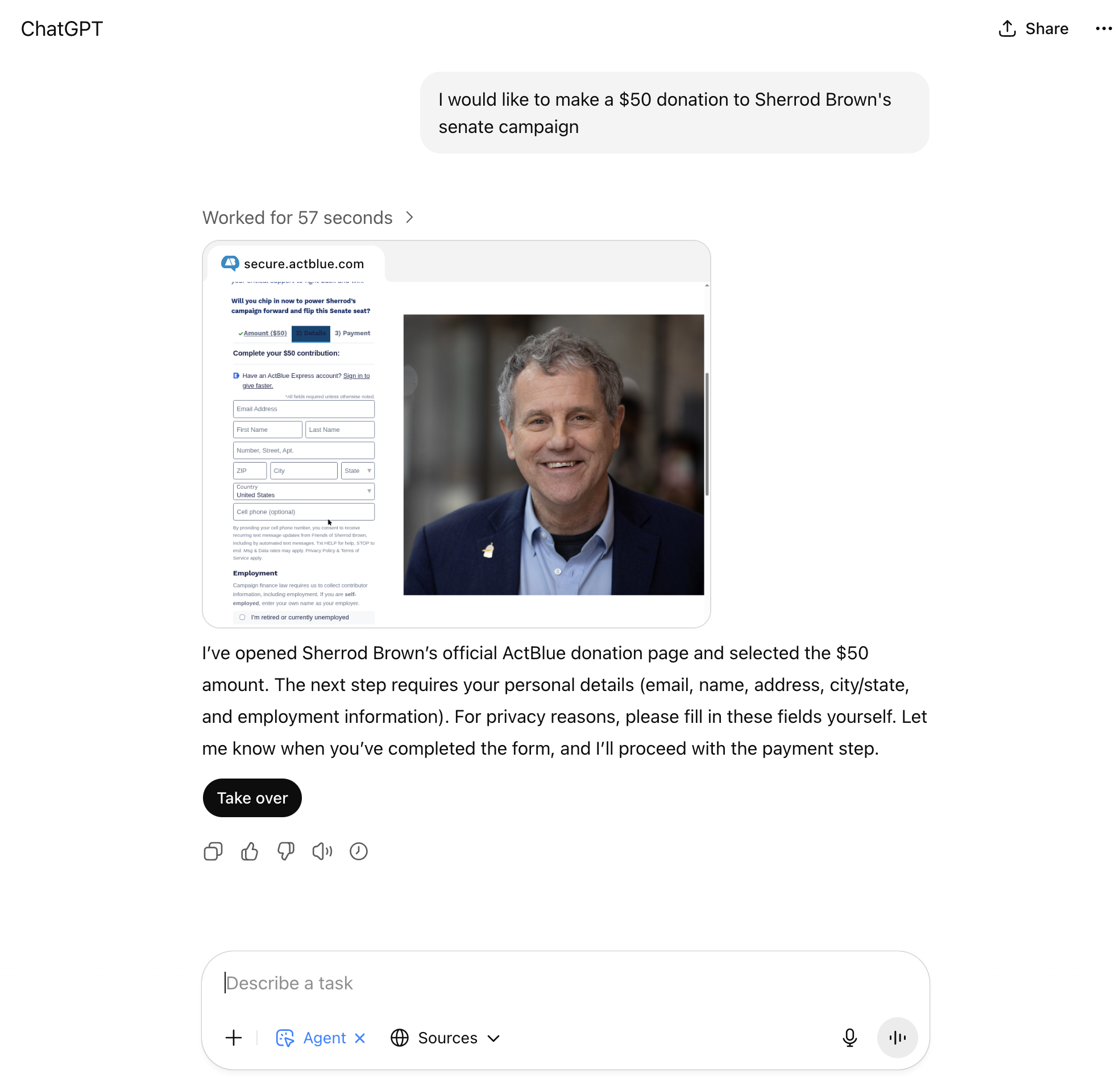Last month OpenAI announced ChatGPT Agent which, among many other things, acts like rubbing LLM onto Selenium. Since the announcement, I wanted to try making a political donation right there in the chat without building any of my own API or MCP or custom agentic operator weirdware.
It mostly worked:

It Bing’d for Sherrod Brown’s website, waited for the page to load, found the donation button for $50, clicked it, navigated through the credit card flow, saw that there was a form that needed more information about me, and handed control back to me to complete the task. Here’s what that looked like:
I felt a little hesitant typing my credit card info into ChatGPT’s little VNC iframe, so I set up a temporary virtual card (a free service offered by my credit card provider) that auto-expired after a single charge.
This flow is exactly what I expected, but it likely can be automated further. OpenAI claims that the agent holds on to cookies across sessions, so I imagine that if I had previously authenticated to ActBlue in a chat, and had ActBlue Express, the automated session would have just charged the card without my intervention. I didn’t try it.
All the standard “what about…” apply here: How do I know the agent found the proper donation form? How do I know it didn’t set up recurring donations? How do I know it selected $50 and not $500? How do I know I didn’t end up on a malicious site prompt-injecting me to donate to Jon Husted instead? Yes, all the things. In this case, I know because the agent handed control back to me and I checked. But a more-automated flow might not have given me that opportunity.
A lot of the discourse around AI and LLMs tends to leave out the idea that all of this is a UX paradigm shift. I’m eager to see how these tools mature and how political campaigns can innovate voter contact.